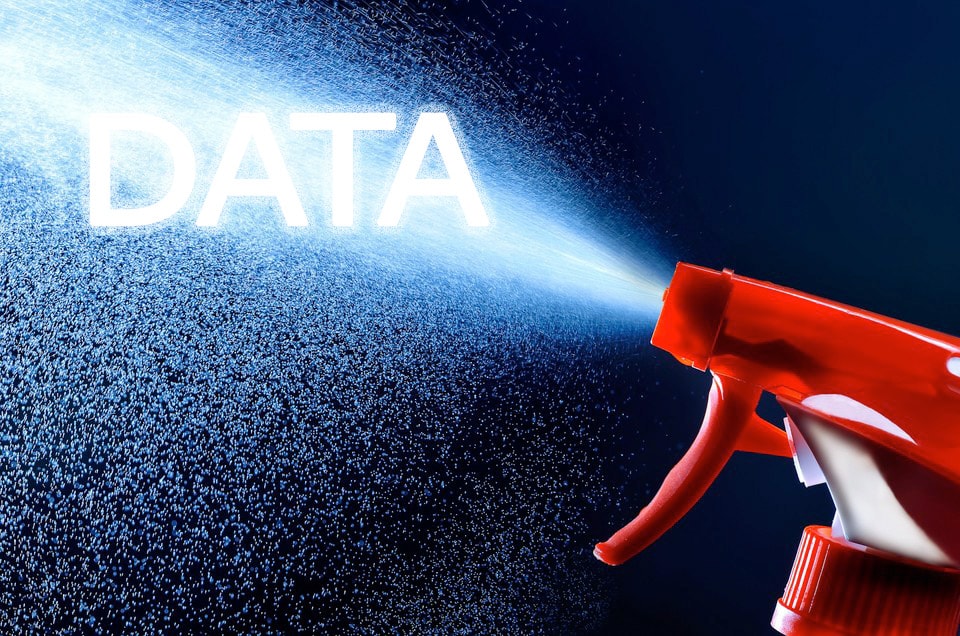As human resources departments leave behind the paper pushing of the past and transition to becoming a business partner to the organization, organizations have increasingly relied on their human resource information system (HRIS) to get them there. And despite which system is used, and the bells and whistles it may or may not have, every database needs to start with data. But in order for any system to be effective, for the organization to experience a return on investment, for HR to be seen as an integral part of the senior management team, it absolutely must have good, clean, reliable data. How do we get there? In short, clean HR data takes ongoing time and effort with a focus on being proactive, rather than reactive when it comes to data maintenance.
How many times has a member of the HR team had to spend time researching questions or inaccuracies pertaining to information on reports or other metrics only to find the root cause was incorrect or erroneous data? And for organizations who have implemented interfaces with other applications (e.g. payroll, time & attendance, learning management, benefit carriers, etc.), how often has it been reported back to the HR team that there is a problem or a data error coming from the system of record – the HRIS. Every time this happens, resources within the company waste valuable time researching the issue, correcting the data and re-testing the interface to ensure the problem has been resolved. Time that could and should be better spent on moving the organization forward rather than treading the dreadful troubleshooting water and just staying afloat. Not to mention, in the process senior and mid-level management, IT staff, employees and any other recipients of this “bad data” have lost confidence in the HR group and the HRIS, and have become frustrated with the inaccuracy of information causing the HR team and it’s data to gain a reputation for being unreliable. When the data in your HRIS is good, the downstream consumers don’t, and shouldn’t, give it a second thought.
4 Suggestions to Maintaining Clean HR Data
-
Create Good System Documentation
Set your team up for success by creating good documentation. Vendors typically provide some sort of a generic user guide or system overview document, but after the initial implementation this document rarely is referenced. Why? Usually it is due to the fact the document is too general and doesn’t address how the organization has actually implemented and is using the system and specific functional areas or modules. So, create an internal training manual or user guide specific to your organization, complete with screen shots, detailed descriptions on how the organization uses specific functionality (e.g. fields, tasks, workflows, security, etc.) and a checklist of related tasks needing to be performed (both inside or outside of the system). Add in any internal charts or guidelines that the team may frequently reference, such as a list of which employee types are eligible for which benefit plans, special notes on when and how custom fields should be used, or any data rules specific to the organization. Include any notes relating to processes and the frequency in which these processes are utilized. For example, some processes may only occur annually (e.g. open enrollment, performance evaluations and salary planning) whereas others may happen monthly (e.g. interfacing data to payroll, distribution of management reports, etc.).
-
Conduct New Team Member Training in Person
In addition to good documentation pertaining to your HRIS, data and processes, whenever possible, conduct training for new team members in person. Although you may think your HRIS process documentation is “good” and up-to-date, with face-to-face training the chances of misunderstanding and misinterpretation are lessened considerably. Not to mention, nothing can replace the personal element to the real-life interaction between you and a new colleague. I also recommend only granting access to a new user once training has been completed. Keep in mind, training is an ongoing task to be revisited frequently and your internal HRIS documentation should be a living, breathing document, ideally in a place where all users can access it at any time.
-
Create Validation Rules for Entering Data into Your HRIS
Validation rules verify that the data a user enters meets the standards specified before the information can be saved. Establishing data validation rules prevents data errors from occurring in the first place. There could be validation rules to warn the user if the employee is not eligible for a benefit plan, if birthdate is missing or if an employee’s rate of pay is outside of their grade range. Warning messages could be created to notify the user if a phone number is not entered in the company’s standard format (i.e. 1.987.555.1212 vs. 987-555-1212) or if the postal code does not follow a specific country format (i.e. Canadian postal code is a six-character A1A 1A1, where A is a letter and 1 is a digit).
If validation rules are not possible, utilize the system’s reporting function to create queries for the administrator to run highlighting data entry errors or omissions. Create reports that help team members not only stay organized, but on top of the data for which they are responsible. For example, create a report showing all people on leave with their expected return-to-work date and a comment if the date is upcoming or in the past. Or, a report which prompts the user for a date range of new hires and whether or not the I-9 information for this new hire is complete.
Other queries can be built to audit data and run on a daily basis. These can be simple queries to show employee records with missing gender or ethnicity information which is important for accurate EEO reporting, leading spaces at the beginning or end of a text field which leads to better data output, or more involved queries verifying employee benefit eligibility and confirming that no required enrollments were omitted. This is a great way to start the day – with a cup of coffee and audit results in the place of a newspaper.
-
Maintaining Data is not Just Accuracy, but Aesthetics and Consistency
Think about all the ways data can be entered into a system and who could possibly be entering the data. It can be an initial upload of data from other systems, ongoing imports from auxiliary applications, day-to-day data entry and updates from the HR team, or from employee or managers via self service. With so many methods to enter and update data, creating mechanisms to help ensure consistent data maintenance is critical.
Take for example a common situation in which older databases store information in all capital letters. How should this data be addressed in a new system? Do you convert the data as-is or do you take the time to convert the data into upper and lower case? Remember, how do you want the information to appear when presented on reports? After the initial data conversion, how will data be entered (i.e. uppercase or mixed case)? Or when entering addresses, consider spelling out or abbreviating street names (e.g. Street vs. St., Avenue vs. Ave.) and having all Apartment or Unit numbers appear in an Address2 field.
Consider setting up required or mandatory fields in the system to ensure data that is important cannot be left blank.
Data accuracy leads to more reliable information and data consistency leads to the appearance of more professional looking results. And I can guarantee both accuracy and appearance matter when providing any workforce related reports to upper management.
 Sound like a lot of time and effort? It is. Data auditing and data maintenance is an ongoing process, but hopefully a labor of love. The accuracy and health of data in a HRIS is critical for an organization’s ability to effectively and swiftly make key business decisions – and to reduce risk regarding compliance and security. The hours to get clean HR data will be spent one way or another and it’s much better to head issues off at the pass than wait for a time sensitive issue to arise. Putting in the time and effort pro-actively will not only produce more reliable and professional results, but increase the HR team’s street cred across the organization.
Sound like a lot of time and effort? It is. Data auditing and data maintenance is an ongoing process, but hopefully a labor of love. The accuracy and health of data in a HRIS is critical for an organization’s ability to effectively and swiftly make key business decisions – and to reduce risk regarding compliance and security. The hours to get clean HR data will be spent one way or another and it’s much better to head issues off at the pass than wait for a time sensitive issue to arise. Putting in the time and effort pro-actively will not only produce more reliable and professional results, but increase the HR team’s street cred across the organization.




